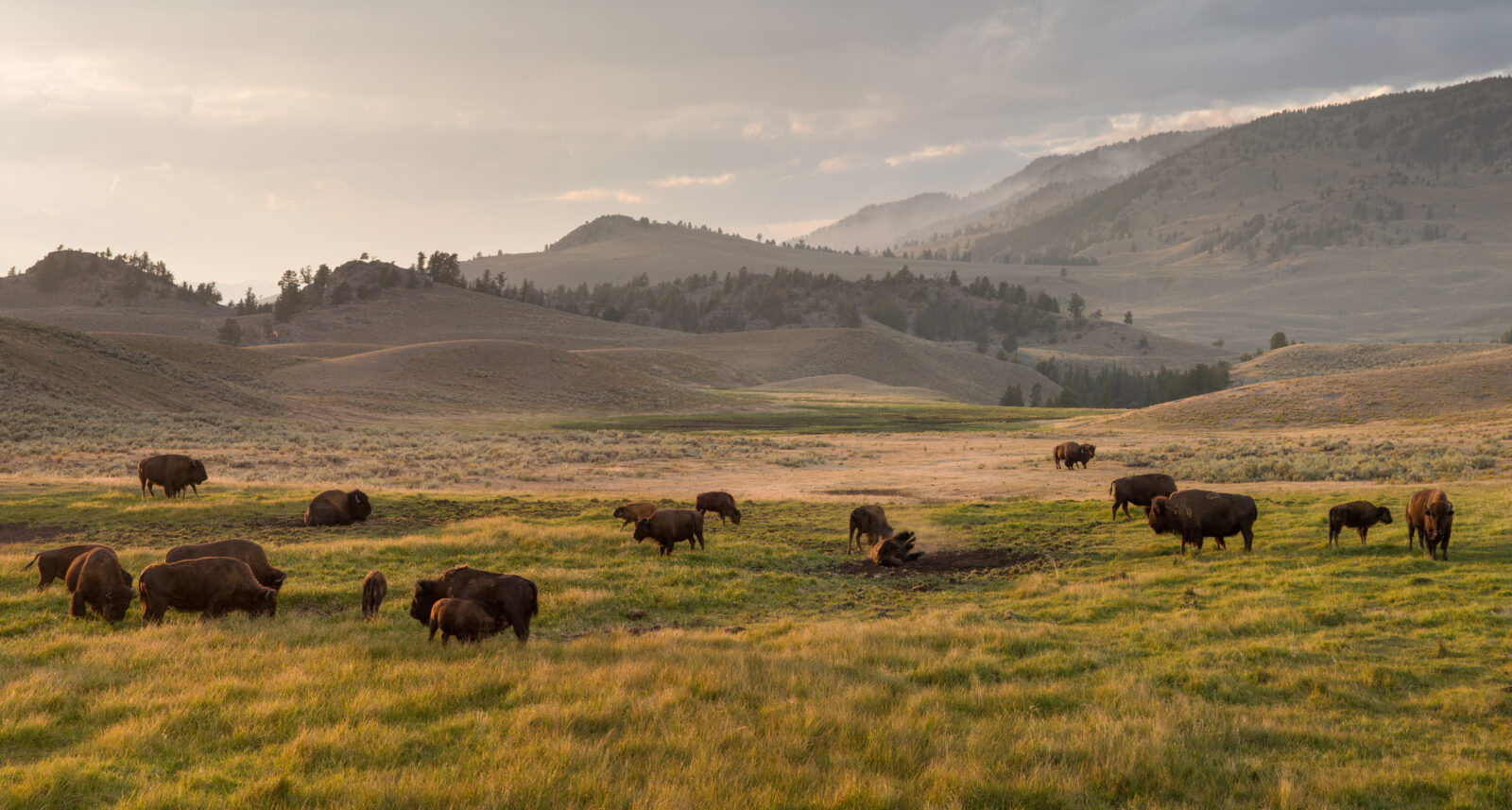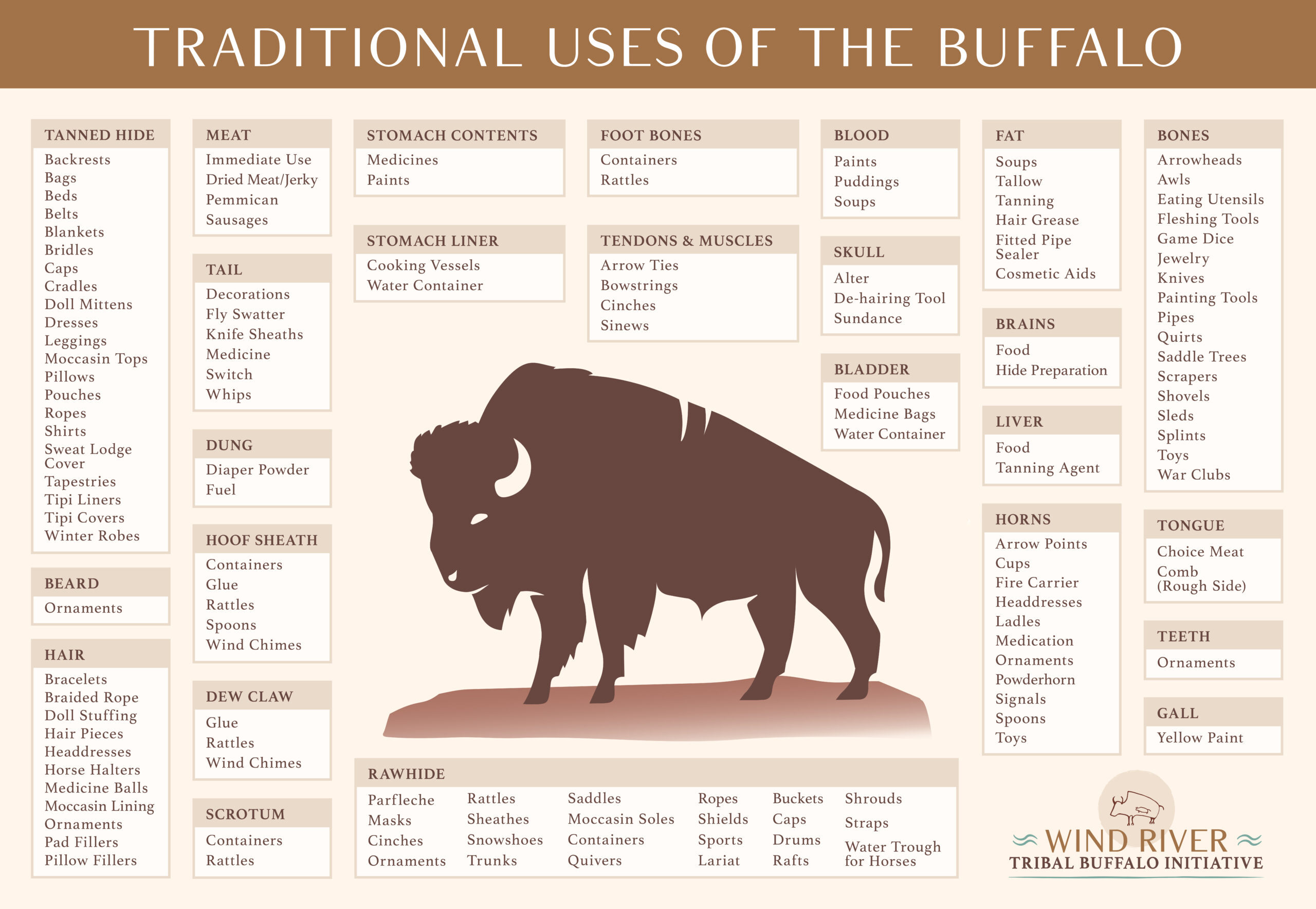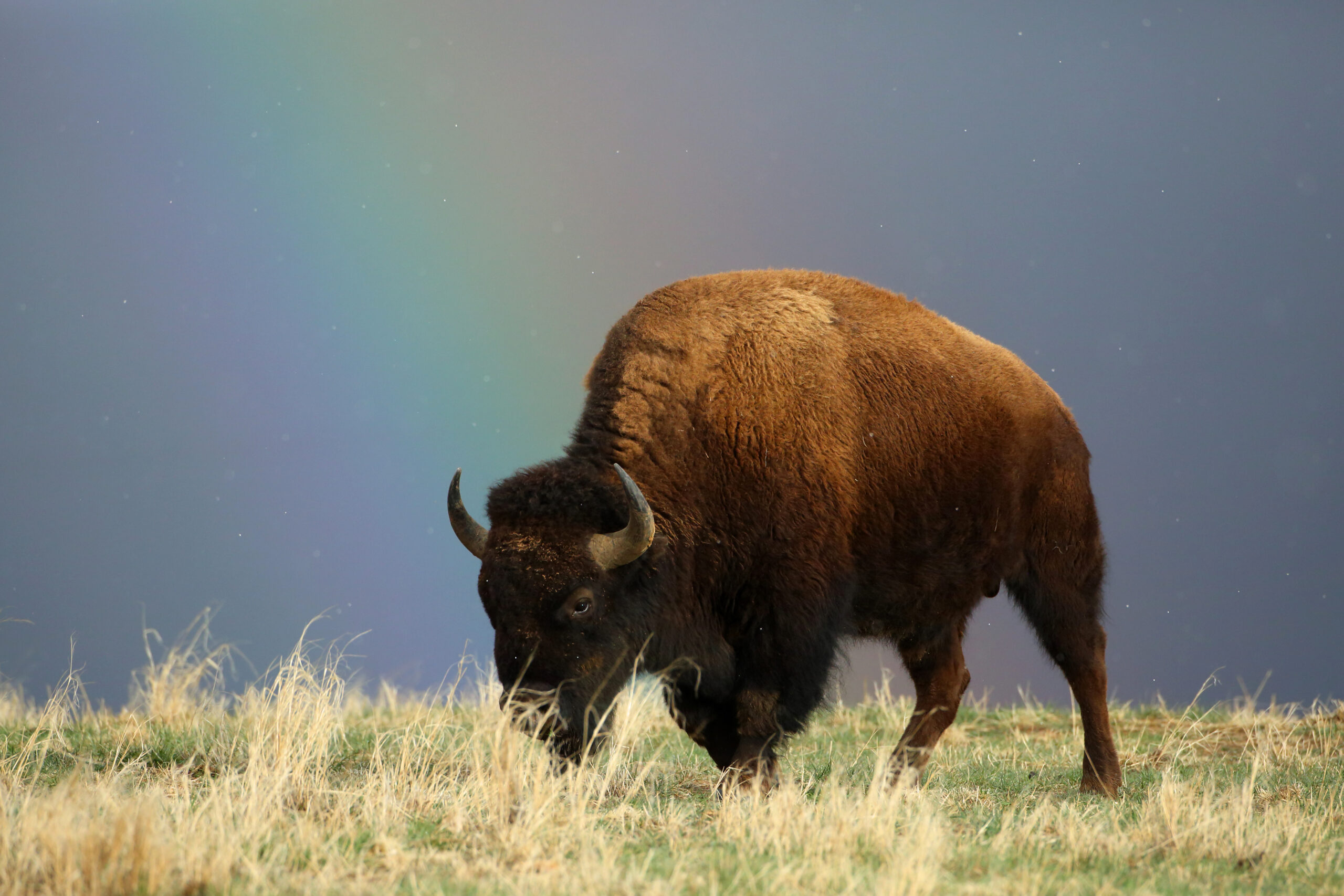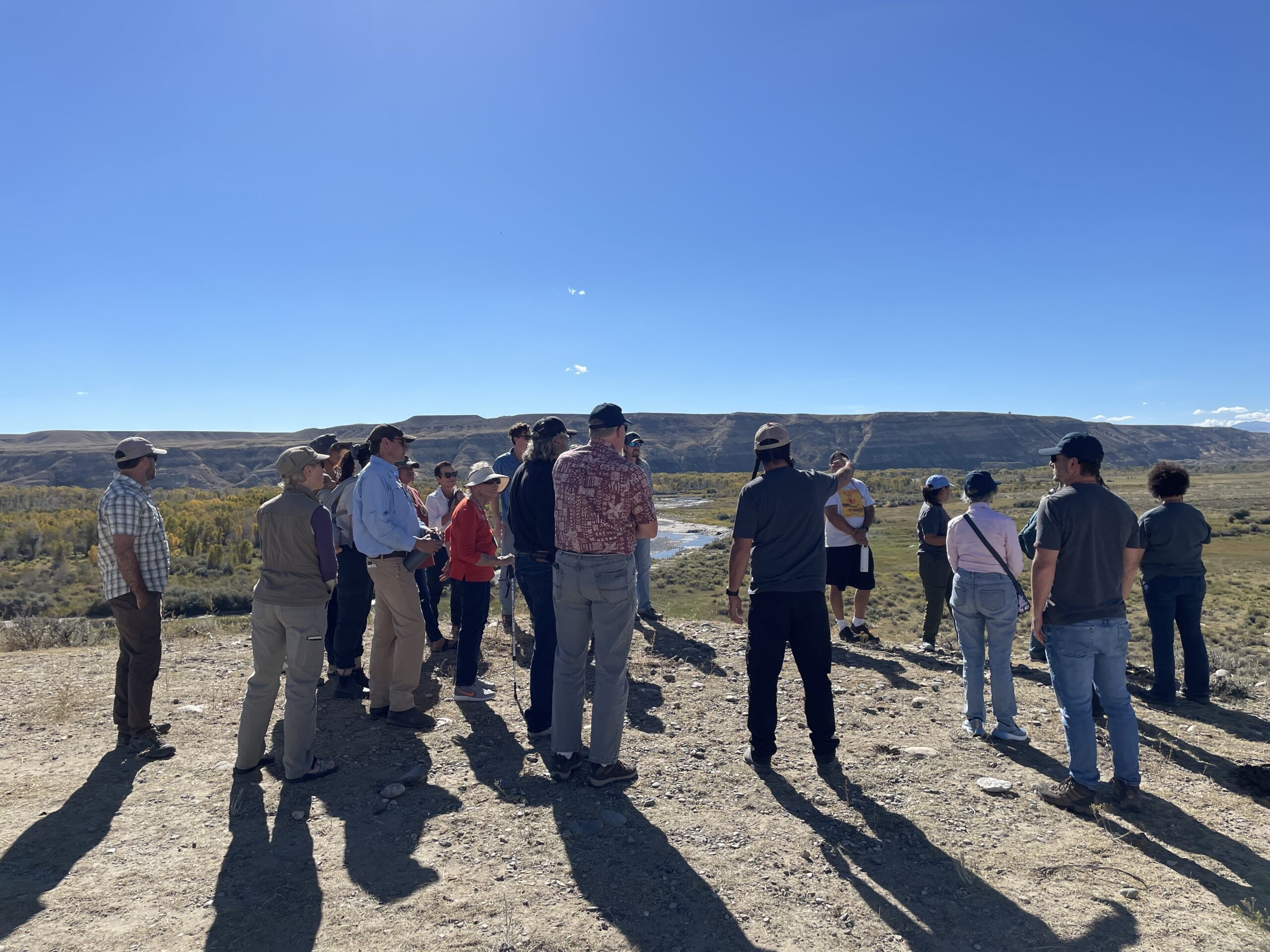We have much more to do and your continued support is needed now more than ever.
A Shared Vision: Restoring Buffalo to Tribal Lands

As National Wildlife Federation’s Social Media Manager, I was fortunate to have the opportunity to travel to the Wind River Reservation in Wyoming to document and learn more about our Tribal Partnerships Program.
I went into the trip knowing very little about such large terrestrial animals. These formidable creatures once wandered the plains by the millions and were reduced to trivial numbers in recent years. I left Wind River Reservation with the knowledge of the vitality of buffalo and the mutualism between tribal communities and the culture intertwined within them.
Wind River Reservation
Our first stop was in Lander, Wyoming to meet Jason Baldes, Senior Manager of Tribal Buffalo Partnerships. Jason, a member of the Eastern Shoshone tribe, and his wife, Patti, a member of the Northern Arapaho tribe (along with their K9 buffalo wrangler Willie), showed us around the reservation.
The Wind River Tribal Buffalo Initiative is restoring tribal communities’ connection with the buffalo. Their mission is to restore buffalo conservation through land rematriation, community revitalization, and youth education. The goal is to have thousands of buffalo on tens of thousands of acres, protected under Tribal law as wildlife.
I learned many things, like how buffalo have seven times the amount of hair per square inch as a cow and it can be used to make yarn and ropes (and birds use it for nests). The average buffalo produces 10 to 12 quarts of dung every day, which is an important source of nitrogen, phosphorus, calcium, sulfur, and magnesium for plants and other animals—helping to heal the land and restore ecosystems. Buffalo provide food, clothing, and shelter and were essential in the spiritual ceremonies of tribes. Nearly every part of the buffalo was used, including horns, meat, and tail hairs.
By healing the land, tribal members are healing the community. Millions of buffalo once roamed the Great Plains of America. According to Jason, “One single buffalo could help feed 6-8 families, to which a tribal community could live off, and in return, the buffalo could live off the land.” As we work to restore the buffalo, a renewal and healing process begins that balances human, animal, and environmental health.

Tribal Partnerships Program
Next, we visited the Red Canyon Ranch where I was able to meet Garrit Voggesser, Senior Director of Tribal Partnerships to learn more about how the National Wildlife Federation plays a key role in restoring buffalo to tribal communities.
Through our Tribal Partnerships Program, the National Wildlife Federation partners with sovereign Tribal nations to solve today’s conservation challenges for future generations. The goal of the Tribal Partnerships Program is to promote environmental and economic justice for Native Americans and to address inequities and resource needs for tribes at the local, state, and national levels.
Because tribes have the most extended continual experience with climate, wildlife, land, and natural resources in North America, the National Wildlife Federation partners with tribes and inter-tribal organizations to increase awareness about climate change and to restore populations of wild buffalo.
NWF and tribal partners work to restore and protect wildlife while preserving key habitats including:
- Protecting bighorn sheep: Working closely with the Nez Perce Tribe to advocate for bighorn sheep restoration and conservation; opening the door to a future that includes viable bighorn sheep herds for the use and enjoyment of tribes and people across the country.
- Giving buffalo room to roam: Working to partner with tribes to restore wild buffalo to tribal nations so their historical habitats and cultural connections to buffalo can be preserved.
- Restoring black-footed ferrets to the American prairie: Working with tribes, including the Cheyenne River Sioux, to bring endangered black-footed ferrets back to their prairie habitat.
All About Buffalo
The scientific name of the species is the American bison (Bison bison), but it’s also commonly known as the buffalo. Along my travels, I learned many fun facts about buffalo, from how they are the largest mammal in North America, how they forage for almost 12 hours a day, and even how they have four stomach chambers.
They can stand up to six feet (1.8 meters) tall and run at speeds of more than 30 miles (48 kilometers) an hour. A male buffalo can weigh upwards of a ton (900 kilograms). Despite their immense size, buffalo still sometimes have to worry about predators like wolves and grizzly bears, in regions where such predators are found. They are herbivores that prefer low-growing grasses, so they are constantly on the move and even walk while eating.
Before the expansion of western colonists, buffalo once roamed over much of North America, including central Canada and most of the interior United States. They prefer open plains, savannas, and grasslands. However, today, wild buffalo are only found in national parks, state parks, and reserves, such as Yellowstone National Park. The Wind River Restoration project aims to change this by reintroducing buffalo to their historical habitat

How To Get Involved
Along my trip, I was privileged to be immersed in the scenery of the Wind River Reservation within the Wyoming mountains, prairies, and badlands. The diversity of wildlife and its ecosystems, combined with the tribal communities allowed me to understand the importance of the Tribal Partnerships program through a different lens.
From the way the community embraced our arrival, seeing hundreds of buffalo roam freely along prairies, and watching a group of strangers become companions through a shared vision was an enlightening sense of belonging; making me realize just how important this experience was and even more importantly will be for our future.
By bringing buffalo back to reservations, we are revitalizing landscapes, habitats, and wildlife diversity, while also re-establishing Native Americans’ cultural and historic connections to both the land and the creatures that call it home.
There are many ways to get involved in our Tribal Partnership Programs. For more information:
- Tribal Partnerships Program
- Restoring Bison to Tribal Lands
- Wind River Tribal Buffalo Initiative
- National Wildlife Federation Tribal Partnerships
- The Story of the Buffalo (YouTube)
- Wind River Reservation Bison Release (YouTube)
- American Bison | NWF Wildlife Guide



























